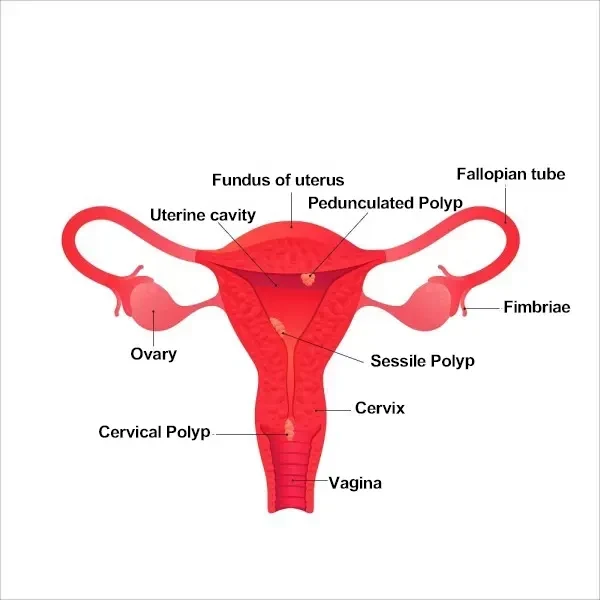
General gynecological problems encompass a wide range of medical conditions and issues that affect the female reproductive system. These conditions can vary in their cause, symptoms, prevalence, diagnosis, treatment, and prognosis.
Here is an overview of some common general gynecological problems:
Menstrual disorders are common and can affect women of all ages.
Hormonal imbalances, uterine fibroids, polycystic ovary syndrome (PCOS), and other factors can contribute to menstrual disorders.
Irregular periods, heavy bleeding (menorrhagia), painful periods (dysmenorrhea), absent periods (amenorrhea), and other menstrual irregularities.
Diagnosis may involve a medical history, physical examination, hormonal testing, ultrasound, and sometimes endometrial biopsy.
Treatment varies depending on the specific disorder but may include medications, hormonal therapy, lifestyle changes, or surgery.
Prognosis depends on the underlying cause and the effectiveness of treatment.
White vaginal discharge is a common occurrence in women and can be completely normal, but it can also be indicative of various underlying conditions or factors. The consistency, amount, and odor of the discharge can vary depending on the cause. Here are some of the common conditions and factors associated with white vaginal discharge:
Normal Vaginal Discharge: It's normal for women to have a mild to moderate amount of white or clear vaginal discharge throughout their menstrual cycle. This discharge helps to keep the vagina clean and maintain its pH balance.
It's important to remember that white discharge alone may not always indicate a problem. However, if you experience unusual changes in your vaginal discharge, especially if accompanied by other symptoms like itching, pain, or a foul odor, it's advisable to consult Dr Vindhya Gemaraju. She can perform tests and examinations to diagnose the underlying cause and recommend appropriate treatment if necessary. Early diagnosis and treatment are essential for addressing any potential infections or health concerns.
PID is relatively common, especially among sexually active women.
PID is often caused by sexually transmitted infections (STIs) such as chlamydia and gonorrhea.
Pelvic pain, fever, abnormal vaginal discharge, painful intercourse, and other symptoms.
Diagnosis includes a physical examination, blood tests, imaging (ultrasound or MRI), and sometimes laparoscopy.
Treatment involves antibiotics to clear the infection and may require hospitalization in severe cases.
Early diagnosis and treatment are important to prevent complications like infertility or chronic pelvic pain.
Common, especially among sexually active women.
Human papillomavirus (HPV) infection is a major cause of cervical abnormalities, including precancerous changes.
Often asymptomatic, but abnormal Pap smear results may indicate the presence of cervical abnormalities.
Diagnosis involves routine Pap smears and, if abnormalities are detected, colposcopy and biopsy.
Treatment may include watchful waiting, removal of abnormal tissue (LEEP or cone biopsy), or, in severe cases, hysterectomy.
Prognosis is generally favorable when detected and treated early.
It's important for individuals to seek regular gynecological check-ups and screenings to detect and address any potential issues early. The prognosis for these conditions can vary widely, and early diagnosis and appropriate treatment often lead to better outcomes and improved quality of life.
Contact us today to schedule an appointment with Dr. Vindhya G


 Whatsapp Now
Whatsapp Now +918106688026
+918106688026